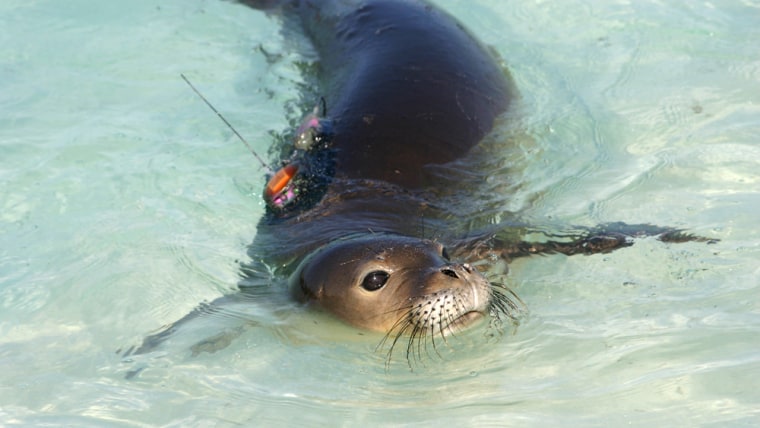A kite-sized, unmanned airplane is joining the effort to protect endangered Hawaiian monk seals and coral reefs in the Northwestern Hawaiian Islands.
Managers of the Papahanaumokuakea Marine National Monument plan to use the 10-pound plane as early as October to help them spot nets and other marine debris.
The electric-powered craft will transmit digital video footage back to a research ship crew that will collect the nets that could entangle monk seals, green sea turtles and other wildlife. Officials also aim to prevent the nets from snagging on coral reefs in the monument.
The plane may join an October marine debris removal voyage but it's more likely to participate in a March excursion since details still need to be worked out, said Rusty Brainard, chief of the NOAA Pacific Islands Fishery Science Center's coral reef ecosystem division.
The Malolo — Hawaiian for flying fish — can carry a camera or other equipment on flights from a host ship. The foam core and carbon fiber plane has wings that span 7 feet.
The Malolo's camera will send streaming video back to the Oscar E. Sette research ship, pinpointing debris within a one- or two-hour flight range.
The crew of the Sette, a National Oceanic and Atmospheric Administration vessel, then will collect the debris.
The agency paid Alaska-based Airborne Technologies Inc. about $250,000 to design and develop the plane.
Tim Veenstra, company president, worked several years with NOAA on airplane-mounted surveillance techniques to find "ghost nets," so called because they keep fishing long after they are abandoned at sea.
The company seeks to eventually reduce the cost of the planes until they get to down to as little $15,000 each.
The Malolo "performed above our expectations," when it was given a test flight at Schofield Barracks last week, Veenstra said.
Bud Antonelis, NOAA's protected-species chief for the Pacific islands, hopes that the Malolo can be used to count monk seals and sea turtles on remote islands and atolls.
He expects the device will help researchers count monk seals more accurately but at less cost. Currently, researchers count the seals sporadically from boats or by walking beaches with binoculars.
The agency wants the craft "to accomplish a variety of missions, from at-sea marine debris detection, to surveillance for enforcement purposes, to protected species surveys, to mapping," said Andy Collins, monument education and technology coordinator.
Airborne Technologies hopes to eventually sell its technology to organizations working for wildlife conservation and other areas that cannot afford the million-dollar price tags of more sophisticated military unmanned aircraft systems, Veenstra said.
